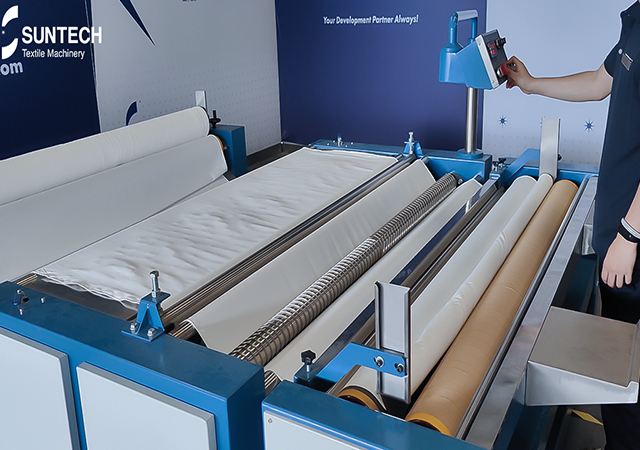In the bustling world of clothing factories, precision and attention to detail are paramount. Yet, one challenge that continuously looms over the industry is the often-unpredictable issue of fabric shrinkage. Fabric shrinkage can throw meticulously planned manufacturing processes into disarray, causing a lot of issues.
Inappropriate Sizing:
When fabrics undergo shrinkage during the clothing production process, the final garment's dimensions inevitably become smaller. This shrinkage can wreak havoc on the meticulously planned sizing requirements, leading to ill-fitting or unwearable garments. The consequences of inappropriate sizing can range from customer dissatisfaction to a surge in product returns, both of which can dent a clothing factory's reputation and profitability.
Deformation in Appearance:
Fabric shrinkage can also trigger a deformation in the appearance of garments. For instance, patterns, lines, or decorative elements on clothing may become distorted, robbing the garments of their original aesthetics and design effects. Such deformities not only affect the visual appeal of the clothing but also undermine the overall quality and marketability of the product.
Production Losses:
Perhaps the most direct and immediate impact of fabric shrinkage in clothing factories is production losses. If fabric shrinks during the manufacturing process, it can render already-produced garments unsellable or necessitate costly rework. This results in a wastage of time, labor, and valuable material resources, hitting the factory's bottom line hard.
To address these issues and minimize the impact of fabric shrinkage, clothing factories must implement proactive measures.
Preventive Measures:
Pre-Washing:
One effective strategy is to pre-wash the fabric before beginning garment production. Pre-washing induces shrinkage and contraction, allowing factories to predict and account for this change in sizing. By conducting this step ahead of time, manufacturers can ensure that the fabric reaches a stable size before it's cut and sewn into garments.

Selecting Suitable Materials:
Choosing the right fiber materials can also significantly reduce the risk of fabric shrinkage. Factories should opt for materials that are less prone to shrinkage or have minimal shrinkage characteristics. Additionally, selecting appropriate processing techniques and machinery can make a significant difference in maintaining fabric integrity.
The Significance of Fabric Relaxation for Clothing Factories:
Fabric relaxation and pre-shrinking are vital components of the fabric preparation process in clothing factories. Proper fabric relaxation plays a pivotal role in ensuring accurate cutting and preventing waste during production. The choice to forego these essential steps can have lasting consequences on the quality and success of the final product.
When fabrics arrive at clothing factories in large rolls, they are initially unrolled and allowed to rest for a designated period. This period varies depending on the fabric type, with elastic materials requiring longer relaxation times. Skipping or inadequately performing the fabric relaxation process can lead to issues with measurement and shaping during the cutting phase, resulting in inaccuracies that affect the entire production line.
To expedite and enhance fabric relaxation, textile manufacturers can employ fabric relaxing machine. These machines are designed to reduce fabric tension by gently spreading the material as it passes through a metal feed. They significantly cut relaxation time, improving production efficiency.
SUNTECH Roll to Roll Fabric Relaxing Machine:
SUNTECH Textile Machinery, a leading textile machinery manufacturer, offers the ST-FRM-VI, the latest iteration of their Roll to Roll Fabric Relaxing Machine. This upgraded model boasts cutting-edge features designed to streamline the fabric relaxation process and enhance fabric quality:
Seamless Fabric Feeding: The machine unwinds fabric with precision, ensuring a tension-free feed to maintain fabric integrity.
Vibrating Conveyor: With the innovative vibrating table that works in tandem with airflow to gently shake the fabric, ensuring the release of any remaining tension. Prevents fabric shrinkage during subsequent processing stages, providing tension-free results.
Air-Flotation Zone: The machine includes an air-flotation zone to provide complete fabric relaxation and reduce processing time.
Compatible Output Fabric Roll: The relaxed fabric roll produced is compatible with automatic spreading machines, saving time and space.
Automatic Edge-Alignment System: With built-in alignment systems, errors are kept minimal, ensuring precise and accurate fabric alignment.
Accurate Length Counting: The machine offers reliable length counting in both yards and meters, with minimal counting errors.
Optional Automatic Width Measuring Device: An optional device for online measurements improves accuracy and convenience.
Automatic Weight Device: With this feature, the machine allows precise measurement of fabric weights.
In conclusion, fabric shrinkage is a critical concern in clothing factories, impacting sizing, appearance, and production efficiency. Employing preventive measures and utilizing advanced fabric relaxation machinery, such as the SUNTECH Roll to Roll Fabric Relaxing Machine, can go a long way in minimizing the negative effects of fabric shrinkage and ensuring the success of clothing manufacturing operations.




